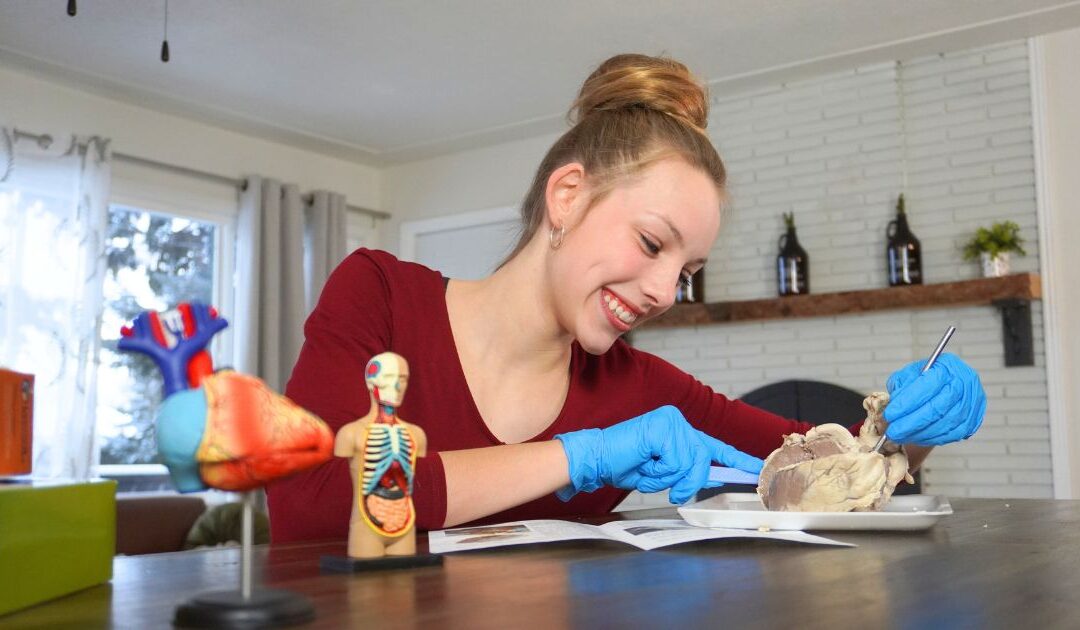Your Complete Field Guide to Dissection
If you’re looking for a way to make biology fun and memorable for your student, look no further than dissection! This complete field guide to dissection will explain everything needed to make dissection labs an enjoyable learning experience for your kids.
This dissection guide will cover:
- the benefits of dissection for your child
- how to make the dissecting process simple and easy
- which specimens and supplies to buy for creating an affordable and fun dissection lab
The guide will also share helpful links to all our free specimen dissection guides, so whichever specimen you begin with, we’ll guide you through it.
Ready? Let’s get started!
The Benefits of Dissection for Students
Science dissections are an important part of biology for all students. Many home and classroom educators agree there is no substitute for the hands-on experience and learning offered with specimen dissection.
- Dissections use a hands-on approach which helps children develop critical skills including a deeper understanding of concepts, better problem-solving, higher critical thinking, and curiosity. This article explains more about these four critical skills and taking a hands-on approach to learning.
- Dissections allow children to observe the anatomical structures of different animal classes and species. Interacting with physical specimens gives them a look at systems that are otherwise impossible to see.
- Curiosity and wonder are fully engaged as kids can wield the lab tools and investigate the specimens with their own hands.
Tips For Planning Your Dissection
The first step in creating a successful dissection experience is to create a plan. Here are a few areas to consider:
1. Plan How You Will Group Students & Supplies
Elementary Students: Up to three students can share one specimen and tools for elementary-level studies. The minimum tool requirements for this level are a #22 scalpel, dissecting scissors, and dissecting pins.
Middle School & High School Students: Upper-class students learn best in groups of two, sharing one specimen and a set of tools. Students working in pairs have ample opportunity to participate in the dissection fully and to examine the specimen carefully. They are also able to share and discuss their observations. A full tool set is recommended at this level. Some students may also want to use latex gloves when handling the specimens.
2. Plan Your Dissection Lab Environment & How You’ll Use It
- Plan to do your dissection on a solid uncluttered surface with plenty of light (e.g., a table near a window).
- Allow time for cleanup when dissection is over. Rinse and dry all tools and thoroughly clean the table or countertop you used.
- Note: If you have a complex specimen, and aren’t able to finish dissecting it in one sitting, you can store the specimen until a later time. Place it on its tray in a large ziplock bag, seal it securely, and store it in a cool, dry place.
3. Consider Time-Saving Pre-Packaged Dissection Kits
- Consider using open-and-go dissection kits. All-in-one kits save you time by arriving with all the dissection supplies needed, including dissection tools, formaldehyde-preserved dissection specimens, and step-by-step dissection guides.
- To learn more about the tools included and dissection safety, this article on Homeschool Science Dissection Kits will dive deeper into both topics.
Which Specimens & Tools To Buy For a Dissection Lab
To get started with a dissection project, there are two approaches you can take. You can purchase lab tools and individual specimens separately or select all-in-one dissection kits that provide the specimen and all necessary tools. We’ll share our recommended list for both approaches.
Option 1: Individual Dissection Specimens & Tools
Essential Home Dissection Lab Tools:
The basic dissection tools are a dissection tray or dissection pan, pins, a scalpel, and scissors. You can also use a teasing needle or probe to examine delicate parts. We recommend wearing latex or nitrile gloves when handling specimens to minimize exposure to residual chemicals. We also recommend each student wear safety goggles or safety glasses during dissections. Upper-class students may prefer our adult-sized safety goggles or adult-sized safety glasses.
Recommended Dissection Tool Kits:
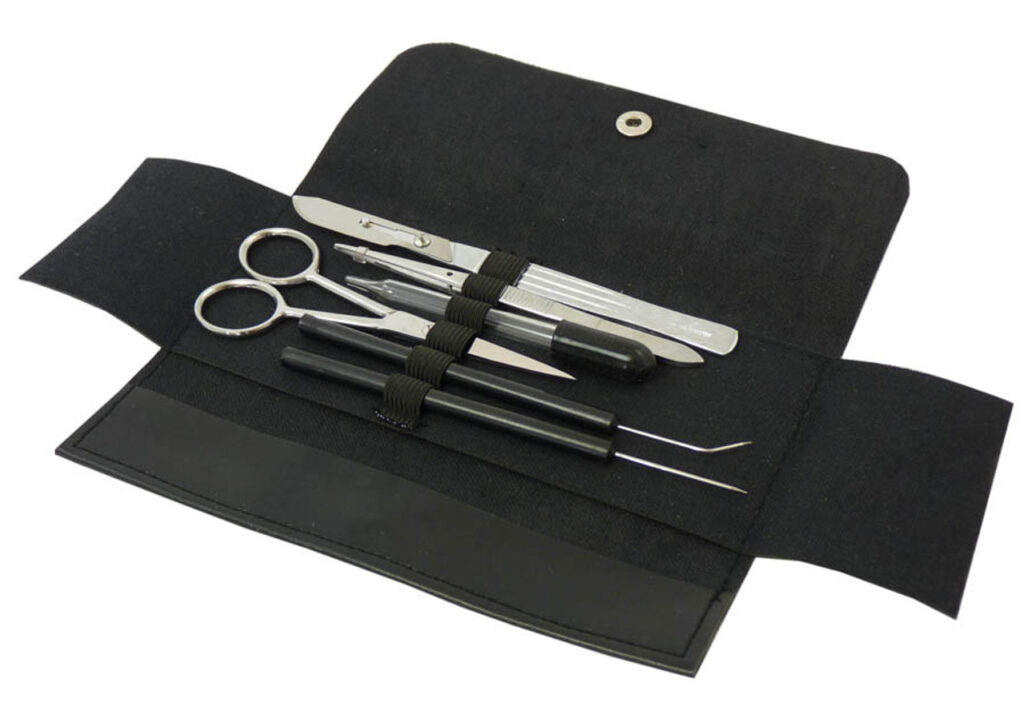
Basic Dissection Kit
This 6-piece basic dissecting tool set is best for beginning-level dissections. It contains scissors, forceps, scalpel, teasing needles and pipet all in a black vinyl case with snap. This kit meets the basic needs of elementary, junior, or senior high students at a very affordable price.
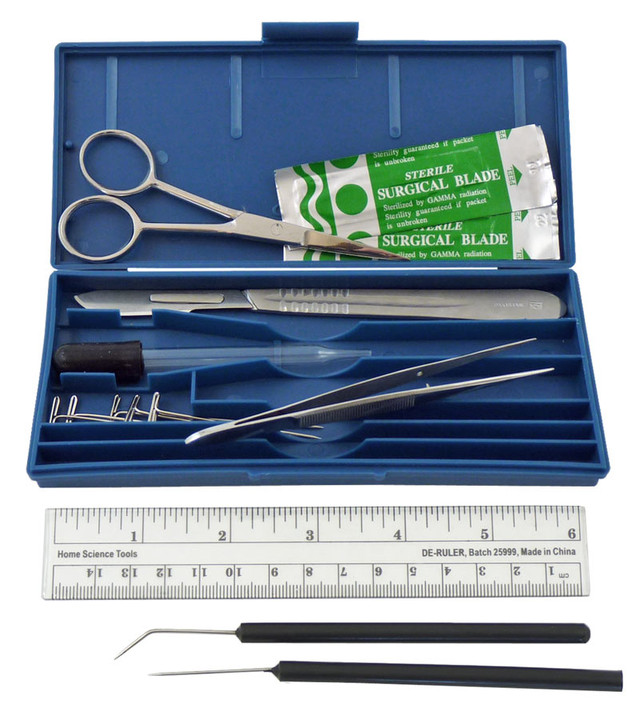
Advanced Dissection Kit
This 17-piece high-quality dissection tool set includes stainless steel tissue forceps, scissors, a scalpel handle, ten #22 scalpel blades, curved and straight teasing needles, a medicine dropper, a clear plastic ruler, and six T-pins, all in a hard plastic case.
Recommended Individual Dissection Specimens
Elementary: For this age group, we recommend beginning with smaller specimens like:
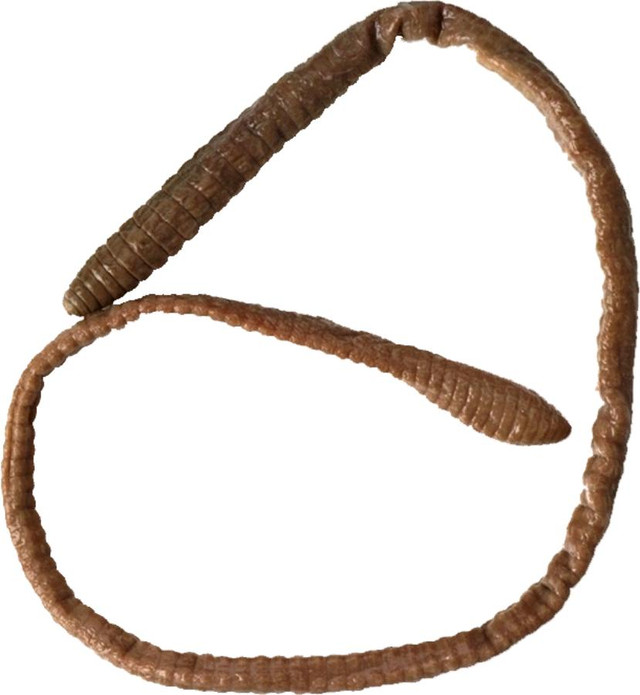
Earthworm Specimen, 9-12″, Plain
Study the body systems of an earthworm with this 9-12″ dissection specimen! Quantity pricing for 10+ is based on bulk-packed specimens & you may receive a combo of 10-packs & individually packed specimens to fill your order.
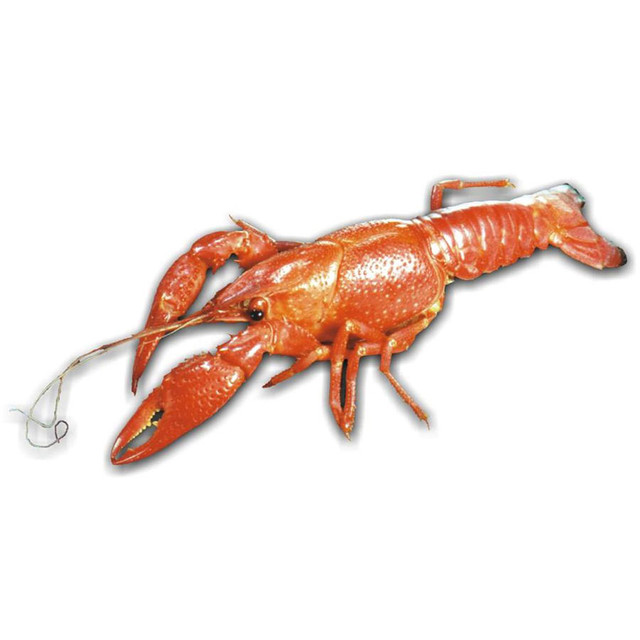
Crayfish Specimen, 4″-6″, Plain
Enliven your study of biology with this plain preserved crayfish specimen!
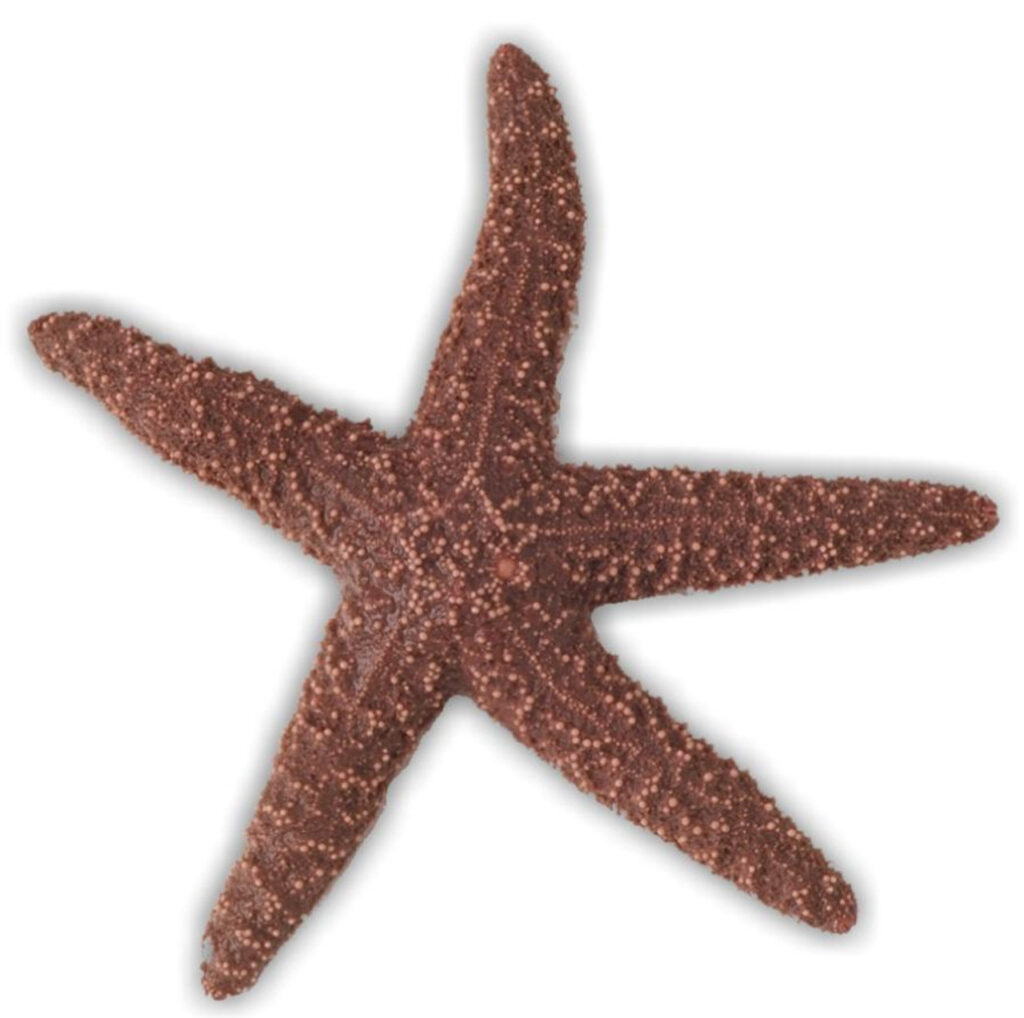
Starfish Specimen, Plain
These preserved starfish dissection specimens are typically genus Asterias. Quantity pricing for 10+ is based on bulk-packed specimens; you may receive a combo of 10-packs & individually packed specimens to fill your order.
Middle & High School: For older students, try these larger specimens:
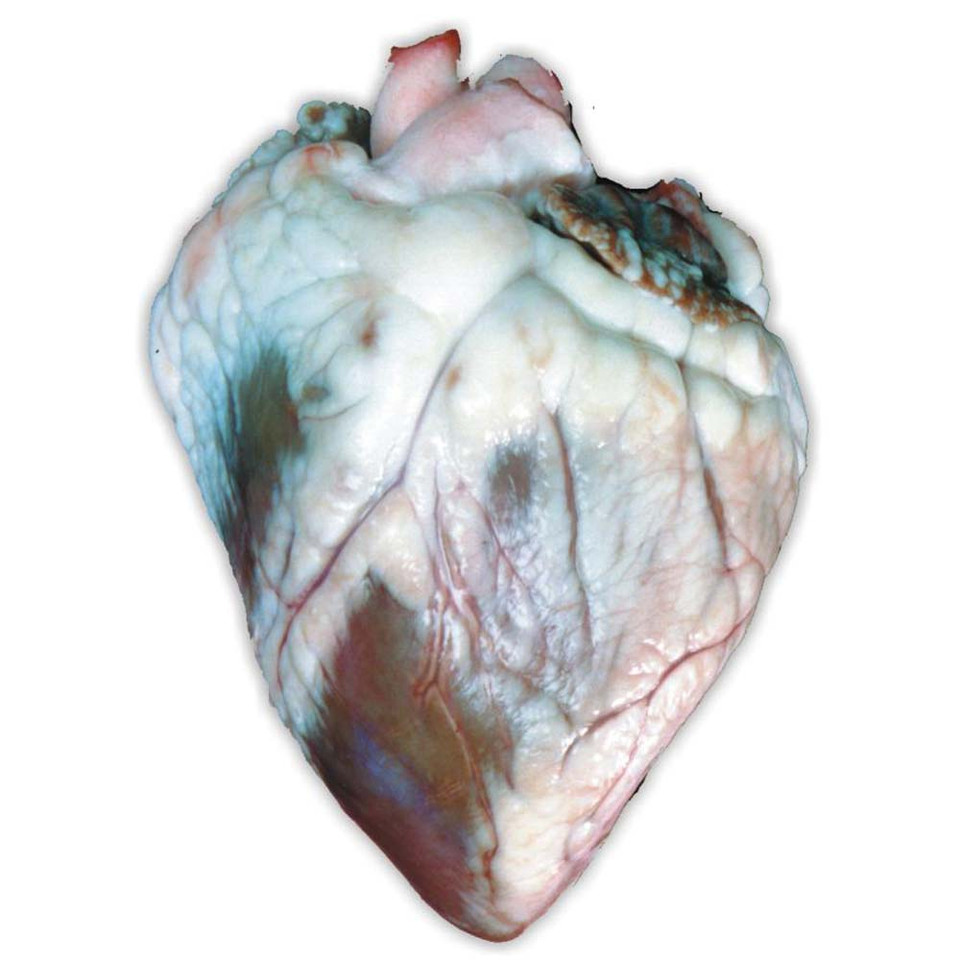
Sheep Heart Specimen
A sheep heart is similar in size to a human’s, making it a great way to study heart anatomy! When you order these sheep hearts in bulk, you may receive a combo of 10-packs & individually packed specimens to fill your order.
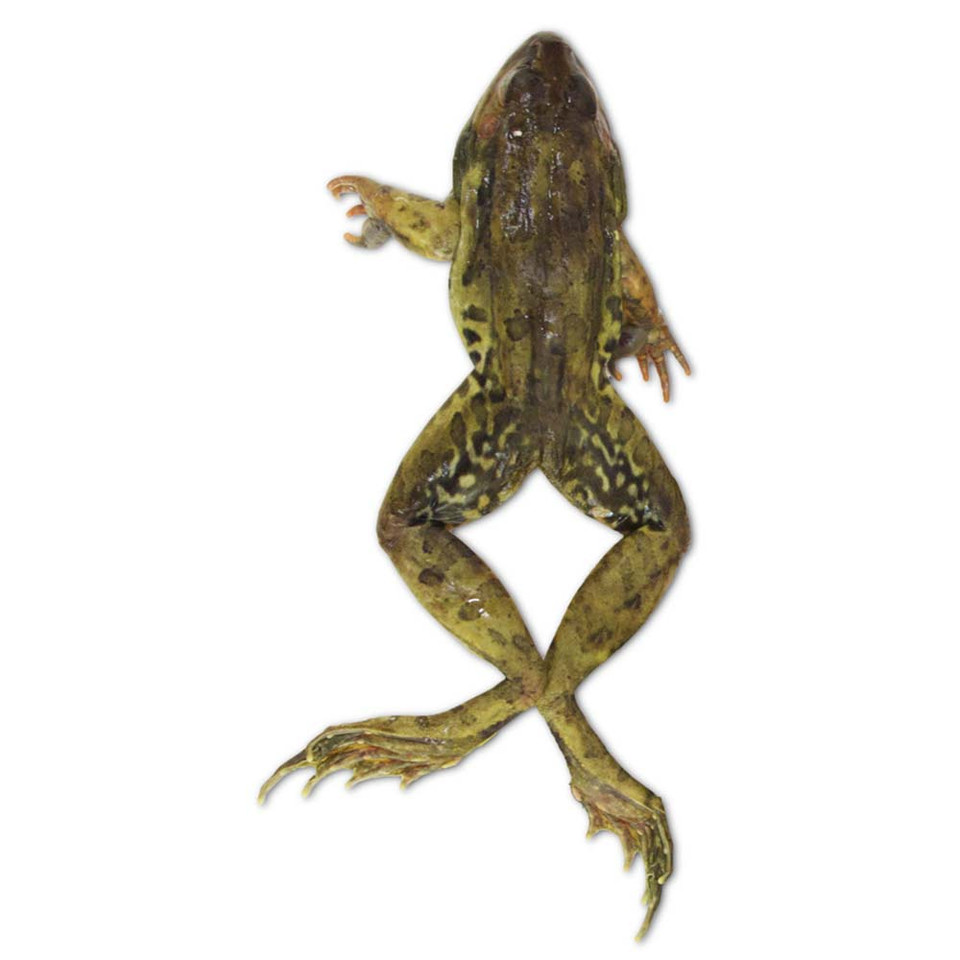
Frog Specimen, Grass, 3.5″-4″, Plain
This medium plain preserved grass frog specimen has a body length of 3.5″ to 4″, large enough to see all the internal organs and external structures.
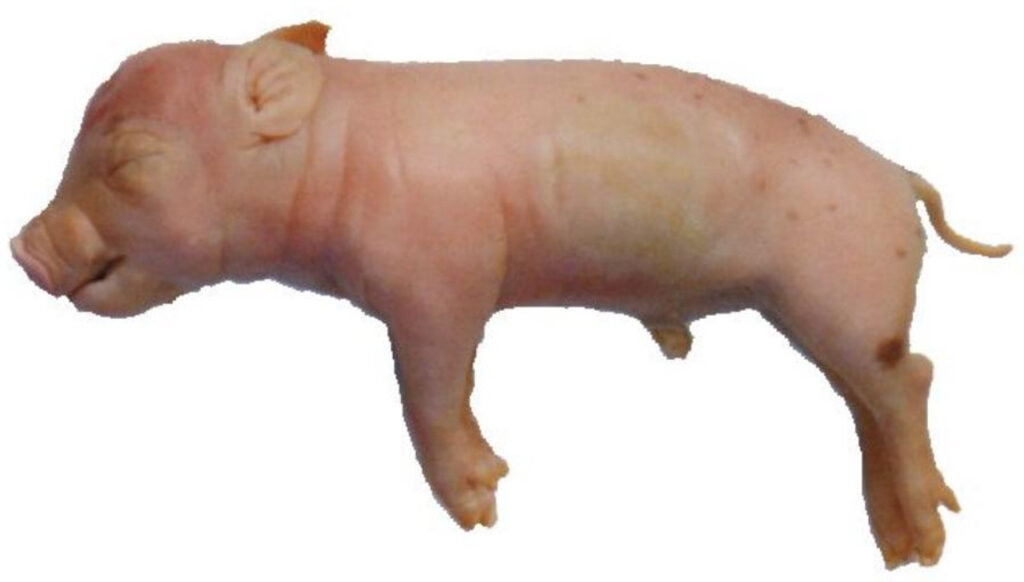
Fetal Pig Specimen, 7″-10″, Double Injected
Fetal pigs are commonly used to study mammal anatomy. This medium-sized preserved pig dissection specimen has blood vessels that are double injected with red and blue latex to make veins and arteries easy to identify.
A Note About Our Specimens
We provide exceptionally high-quality specimens and guarantee your dissection specimens will arrive fully preserved, free from decay, and will not excessively dry out for one year after purchase. Please understand that all specimens, though preserved, eventually dry out. Specimens used within one year will have the best outcomes. To learn more, visit our Dissection Specimens FAQs page.
Option 2: Complete Dissection Kits
Buying pre-packaged kits with all the necessary tools and instructions is a popular choice for parents and teachers alike, particularly for larger groups of students in a co-op or classroom where specimens and tools will be shared.
Recommended Beginner Dissection Kits
Elementary Kits:
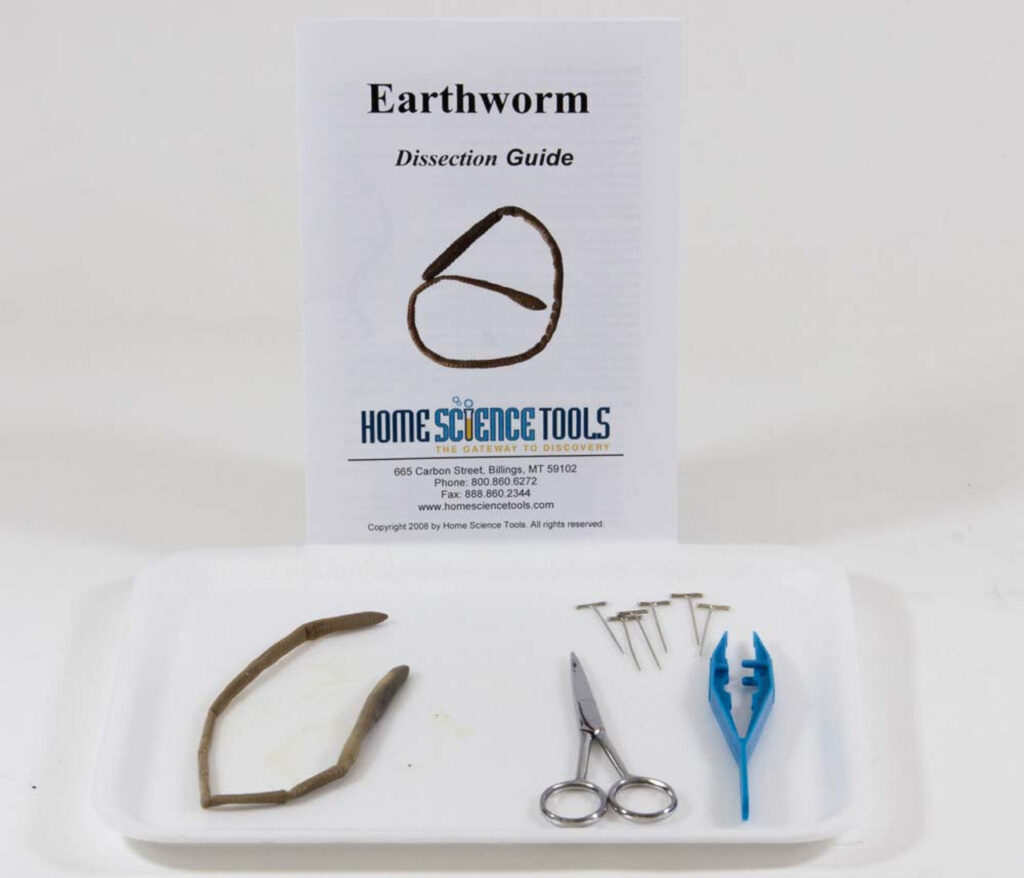
Earthworm Dissection Kit
Get everything you need for dissecting an earthworm! This earthworm dissection kit comes with a preserved earthworm, a full-color dissection guide, dissecting scissors, plastic forceps, 6 T-pins & a styrofoam dissection tray.

Starfish Dissection Kit
Get everything you need for dissecting a starfish! This starfish dissection kit comes with a preserved starfish specimen, plus all of the dissection tools you need for an engaging and interactive dissection experience.
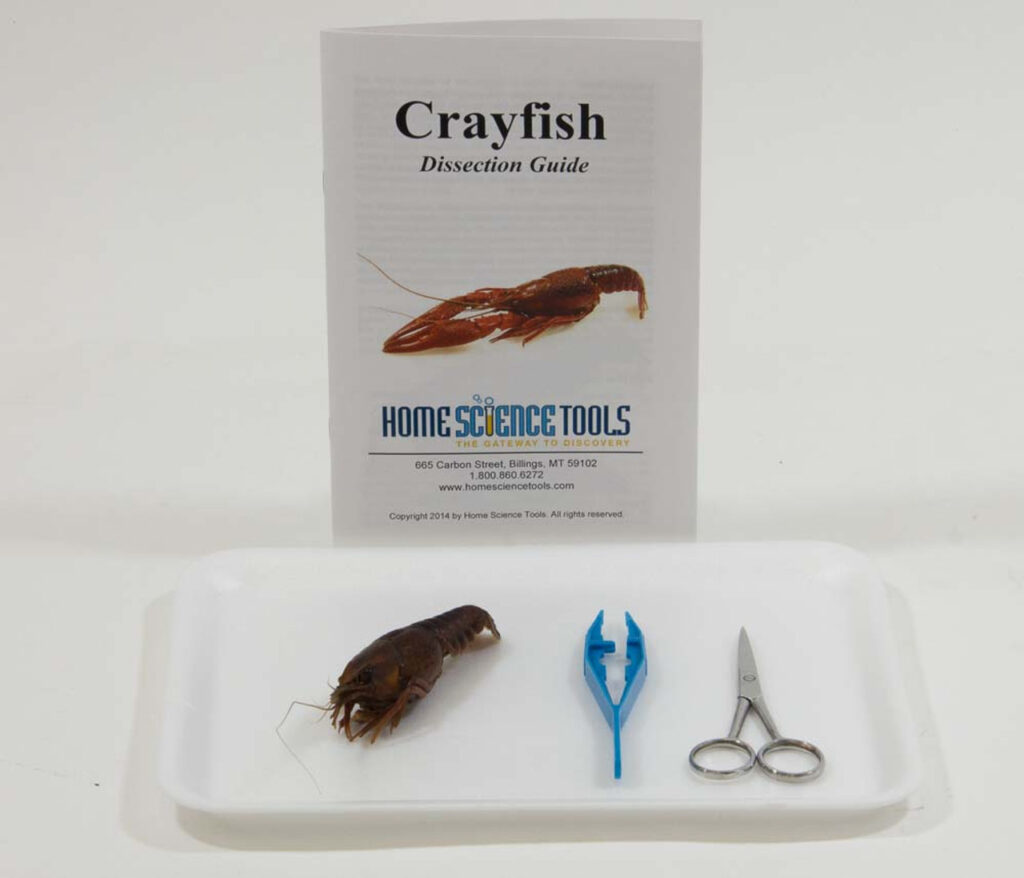
Crayfish Dissection Kit
This complete crayfish dissection kit comes with a preserved crayfish specimen, a full-color photographic dissection guide, scissors, plastic forceps & a dissecting tray. A perfect introductory-level dissection activity!
Middle & High School Kits:
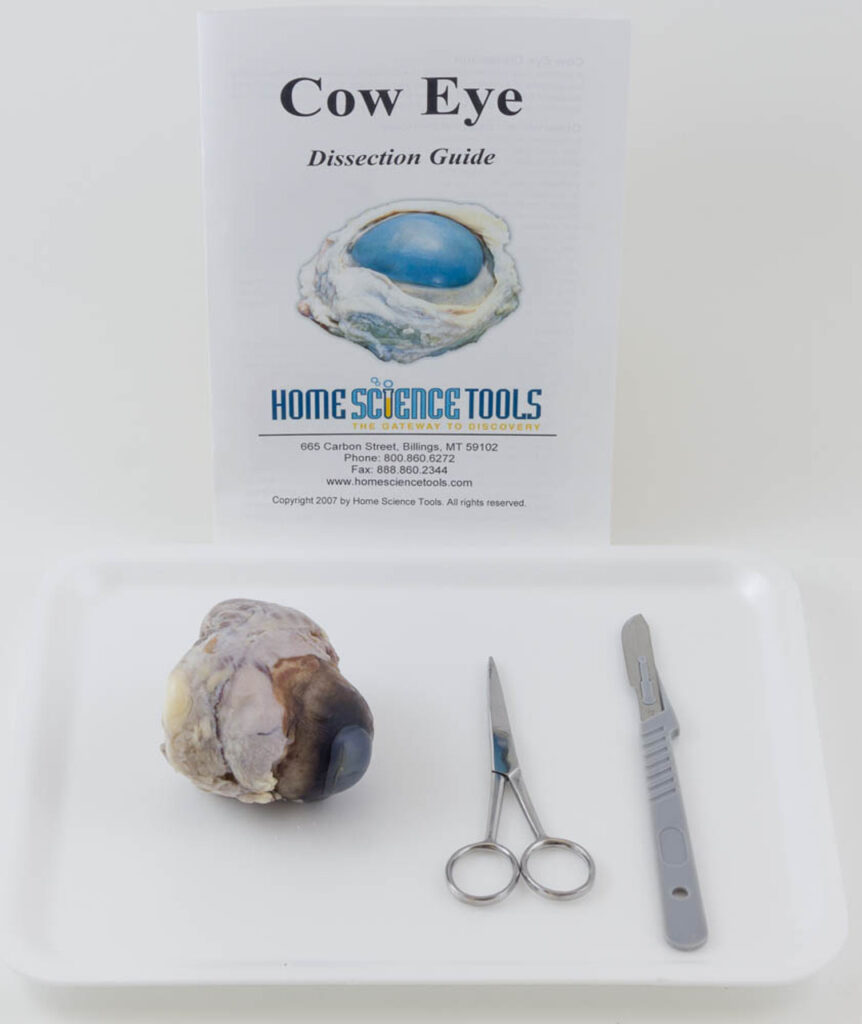
Cow Eye Dissection Kit
This Cow Eye Dissection Kit gives an inside view of how the eye works. It comes with everything you need for this activity, including a preserved cow eye specimen, a step-by-step dissection guide & essential dissection tools.
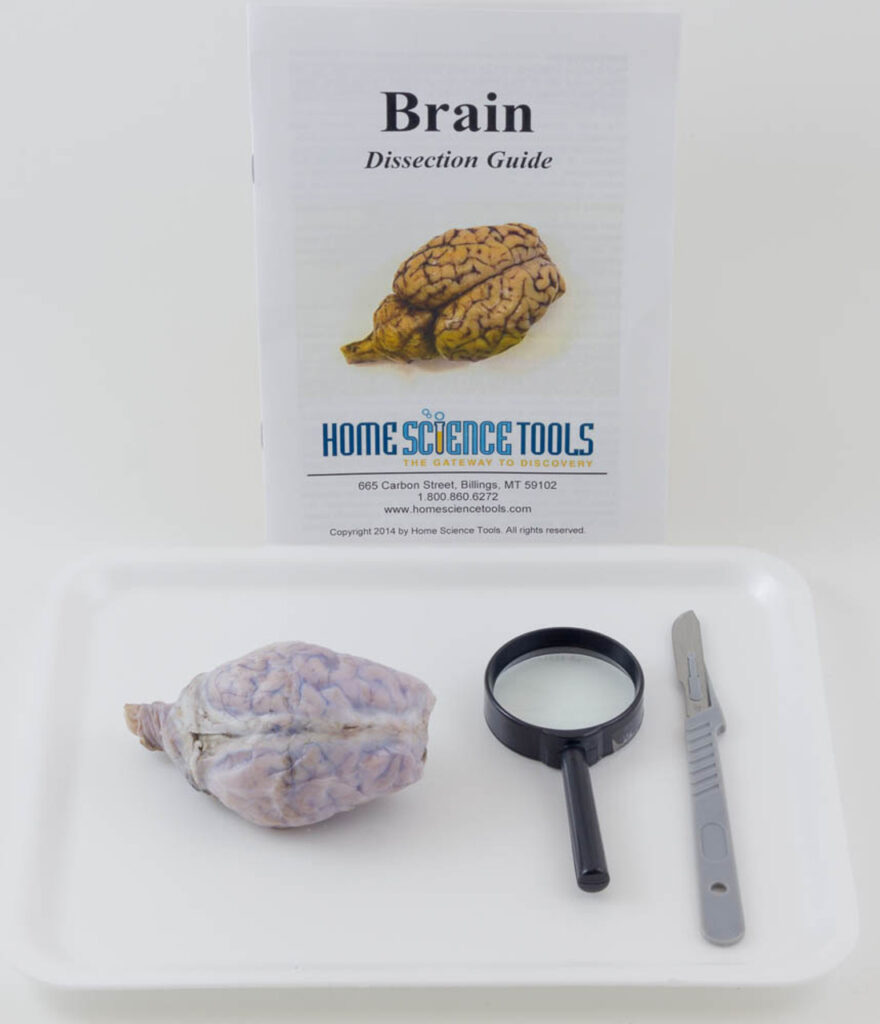
Sheep Brain Dissection Kit
Study the anatomy of the brain with this complete sheep brain dissection kit! Includes a preserved sheep brain specimen, a photographic sheep brain dissection guide, a #22 scalpel, a magnifying glass, and a dissection tray.
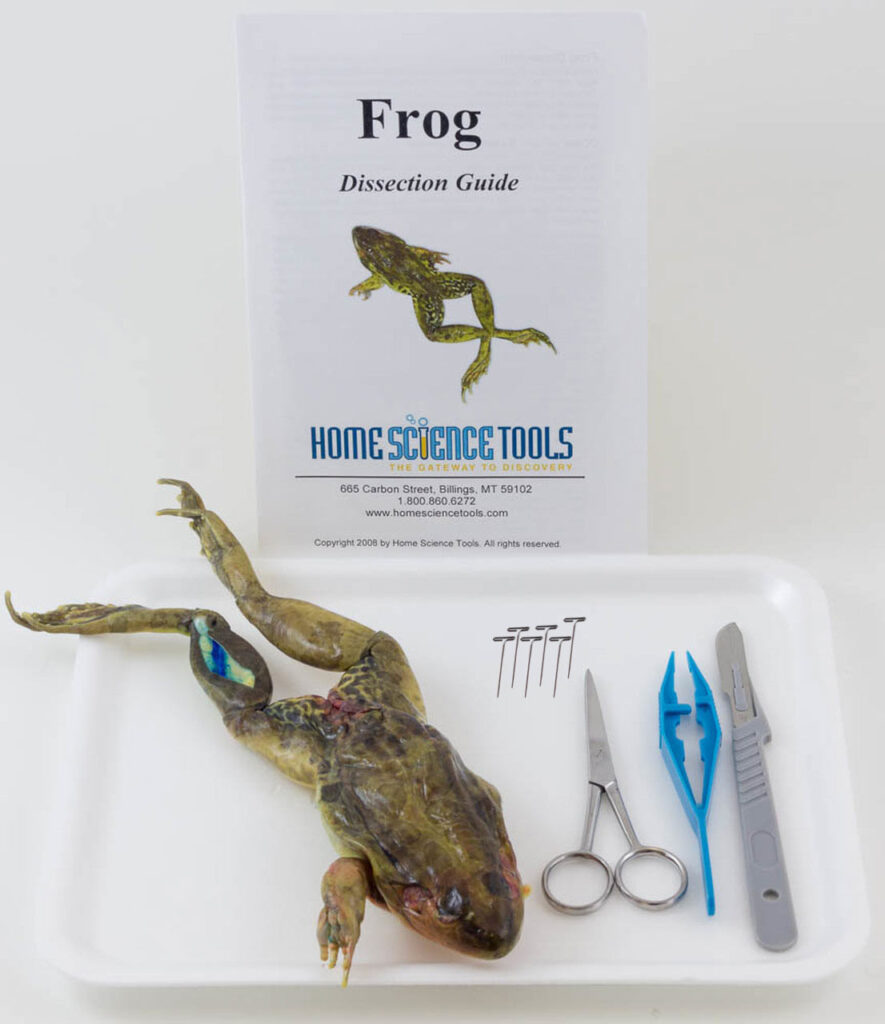
Frog Dissection Kit
Make dissecting a frog easy! This complete frog dissection kit comes with a preserved frog specimen, a step-by-step dissecting guide, and all the dissection tools needed. A great hands-on way to study internal anatomy.
Recommended Advanced Dissection Kits
Middle & High School: Intermediate or Advanced Multi-Specimen Kits
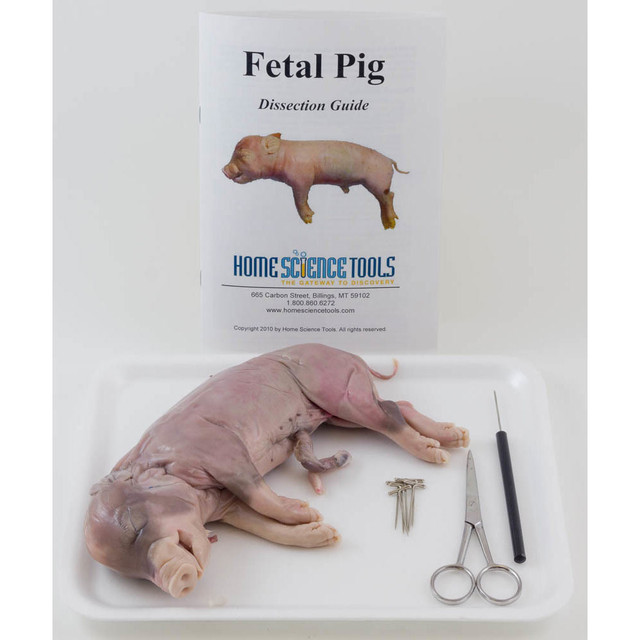
Fetal Pig Dissection Kit
Our fetal pig dissection kit has all you need for a hands-on internal anatomy lab. Get a preserved 7-10″ fetal pig, a dissection guide, a scalpel, dissecting scissors & more. Highly rated by students, teachers & parents!
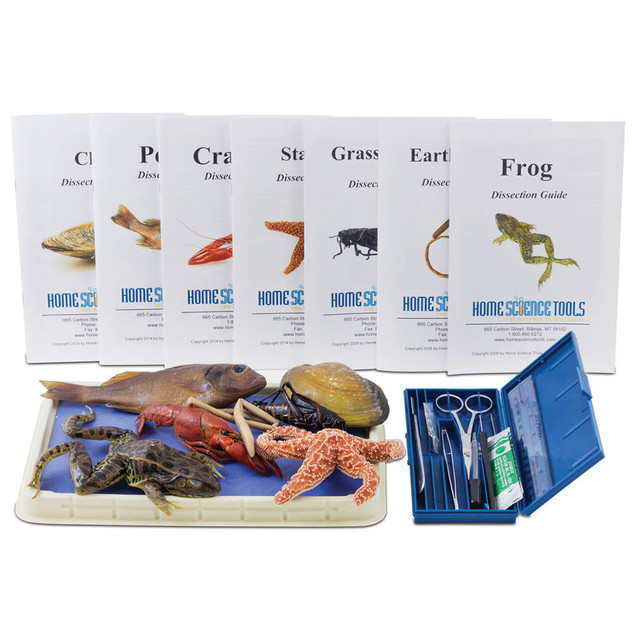
Intermediate Dissection Kit
Study the anatomy of seven different preserved animal specimens as you work through the hands-on animal dissections in this kit. It’s a unique & memorable way to see how internal organs fit together!
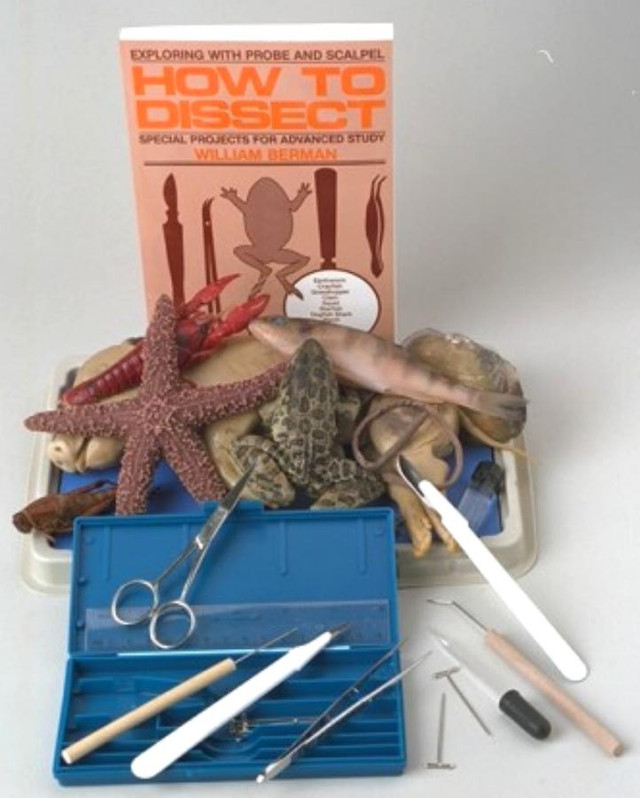
Advanced Dissection Kit
This advanced dissection kit includes 9 preserved animal specimens, our 17-piece dissection tool set with high-quality stainless steel instruments, a reusable dissecting pan & a book by William Berman called How to Dissect.
Recommended For Large Groups
Choose these kits to get 10+ specimens and necessary tools for large groups of students.

Classroom Sheep Heart Dissection Kit
This complete dissection set comes with ten preserved hearts, ten illustrated dissection guides, ten #22 scalpels, ten teasing needles, dissection pins and ten dissecting trays.
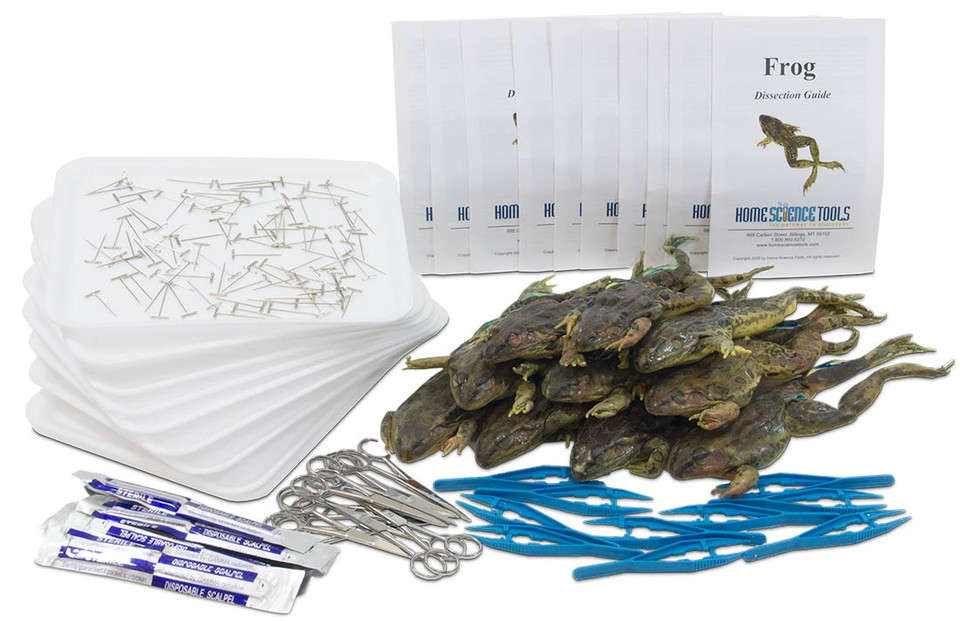
Classroom Frog Dissection Kit
This classroom frog dissection set contains 10 double-injected, extra-large preserved frogs, 10 illustrated dissection guides & 10 sets of dissection tools. It’s perfect for small classrooms or for student groups to share!
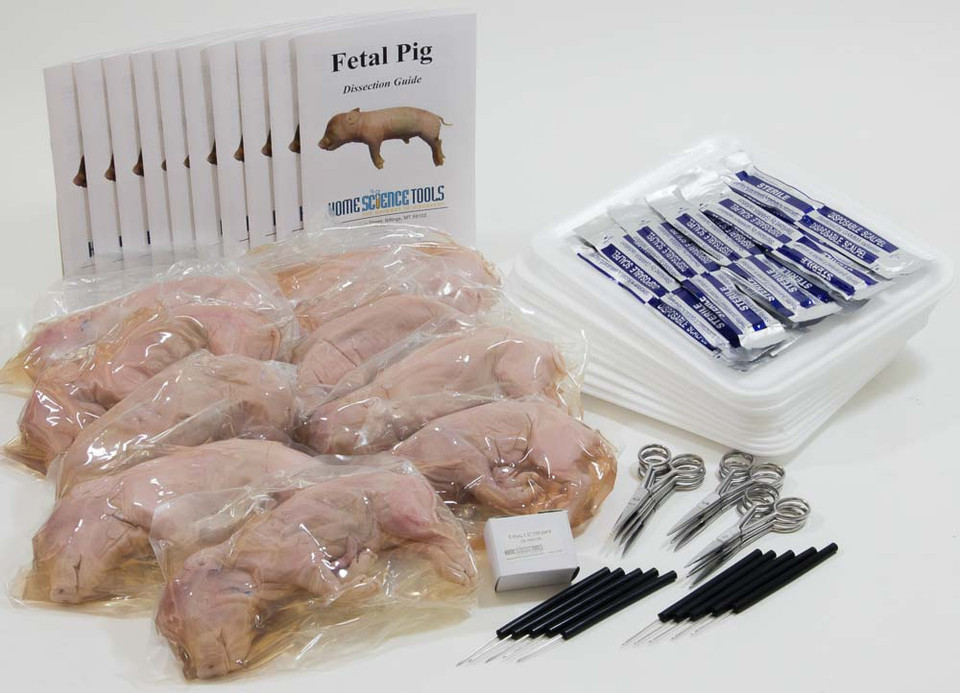
Classroom Fetal Pig Dissection Kit
This dissection kit comes with 10 double-injected, 7-10″ fetal pigs, 10 illustrated dissection guides, and 10 sets of tools/instruments, including trays.
Want to Browse all Dissection Products?
How to Support a Student Who is Not Comfortable With Dissection
While dissection is a tradition in biology labs and can offer tangible benefits to science learning at the middle and high school levels, not every child is comfortable (or willing) to complete these labs.
That’s ok. Be sensitive to your child’s needs in this area.
You will be dealing with real animal specimens. If you try to force activity for the sake of learning, then the learning isn’t beneficial.
Some curricula provide alternatives to animal dissection kits by replacing dissection with other activities.
More Resources for a Great Dissection Experience
- Collection of Dissection Guides: Grab how-to guides, see videos, and find answers to frequently asked dissection questions
- Popular Individual Dissection Guides: Fetal pig, Sheep brain, Sheep heart, Frog, Cow eye, Earthworm
- Dissection FAQs: Find answers to the most common dissection questions
- Browse our open-and-go dissection kits for all ages



